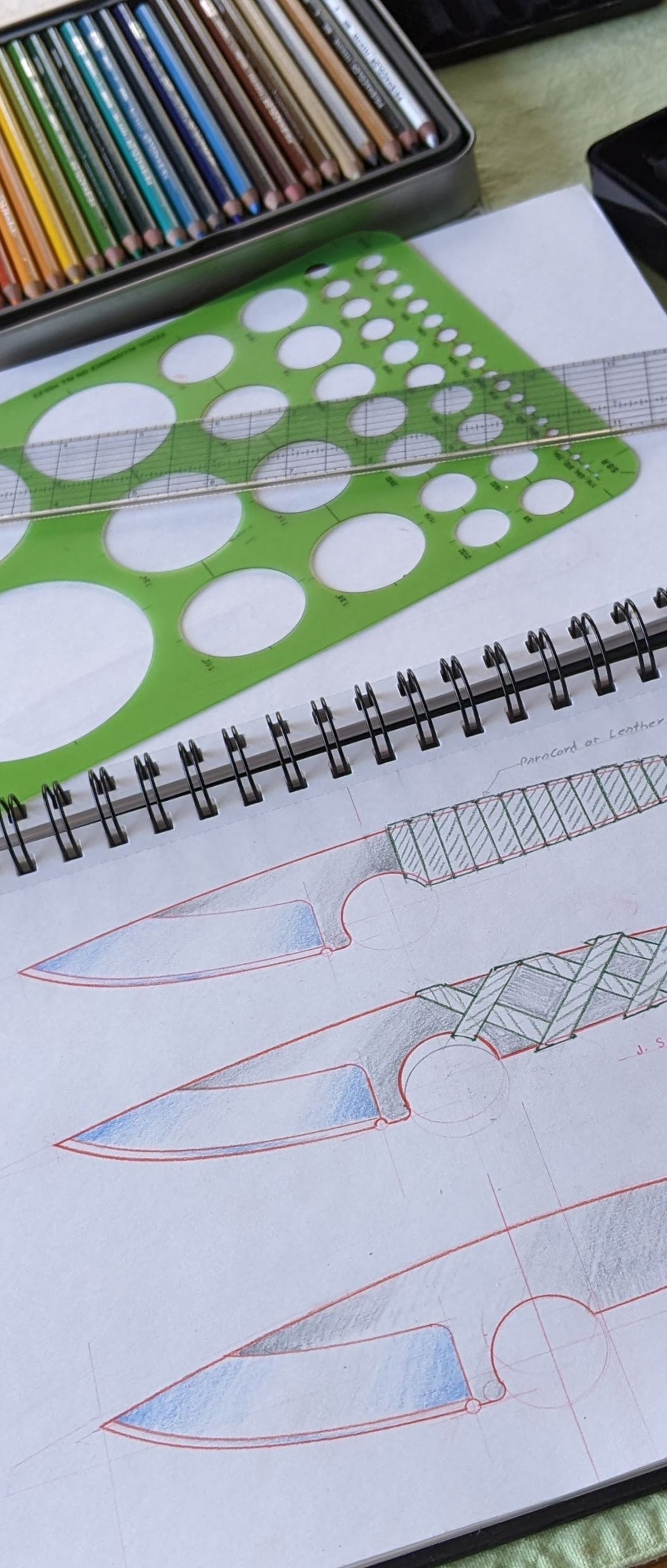About James Sortor

I have been dabbling in knife making on and off again for years. Starting out in my youth with kit knives and moving into found steel knives. Eventually forging out of proper knife steels. During the pandemic my on again off again interest turned into a more serious endeavor. Metal working equipment was acquired, a proper shop setup, and I started turning out knives regularly. Mostly for my own purposes, then for friends and family. Now I spend my time making knives for you and your family.
By profession/education I am an Industrial Designer. Industrial Designers are the folks who design all the everyday mass produced items that surround us all. We straddle the line between artists and engineers. We come up with a new concept and shepherd it through to production. Most of my career was spent working in the office furniture industry, with a heavy focus on ergonomics and human factors. The study of human beings and how they interact with machines and objects.
I spent 20+ years working for the grand daddy of ergonomics Niels Diffrient. Not exactly a household name but a big deal in the fields of ergonomics and chair design. The most important lesson I learned in those years was to resolve the functional aspects of a design before giving thought to the appearance of the design. It does not matter how good a product looks if it does not function well. If a knife is beautiful but does not cut well, it fails at its primary purpose, which is to cut things. Similarly, if a knife is uncomfortable to use it will not be used for very long. It will end up in a drawer with other knives that are not used. The trick is to design a knife that functions well, is comfortable to use and is beautiful in appearance. No easy task. If you get the function correct the form will be a natural outgrowth of that functionality. A knife maker needs to understand the engineering of cutting, the ergonomics of knives and the aesthetics of beauty.
There are tradeoffs to be made in every design. Engineers, designers, and ergonomists are famous for fighting turf wars in the design process. Everyone knows the importance of their own field of expertise, but few understand the other fields. The trick, Niels taught me, was to understand all three fields of expertise: engineering, ergonomics, and design. This way all the design trade off take place in your own head with no one field pushing their opinion to the detriment of the other two.
